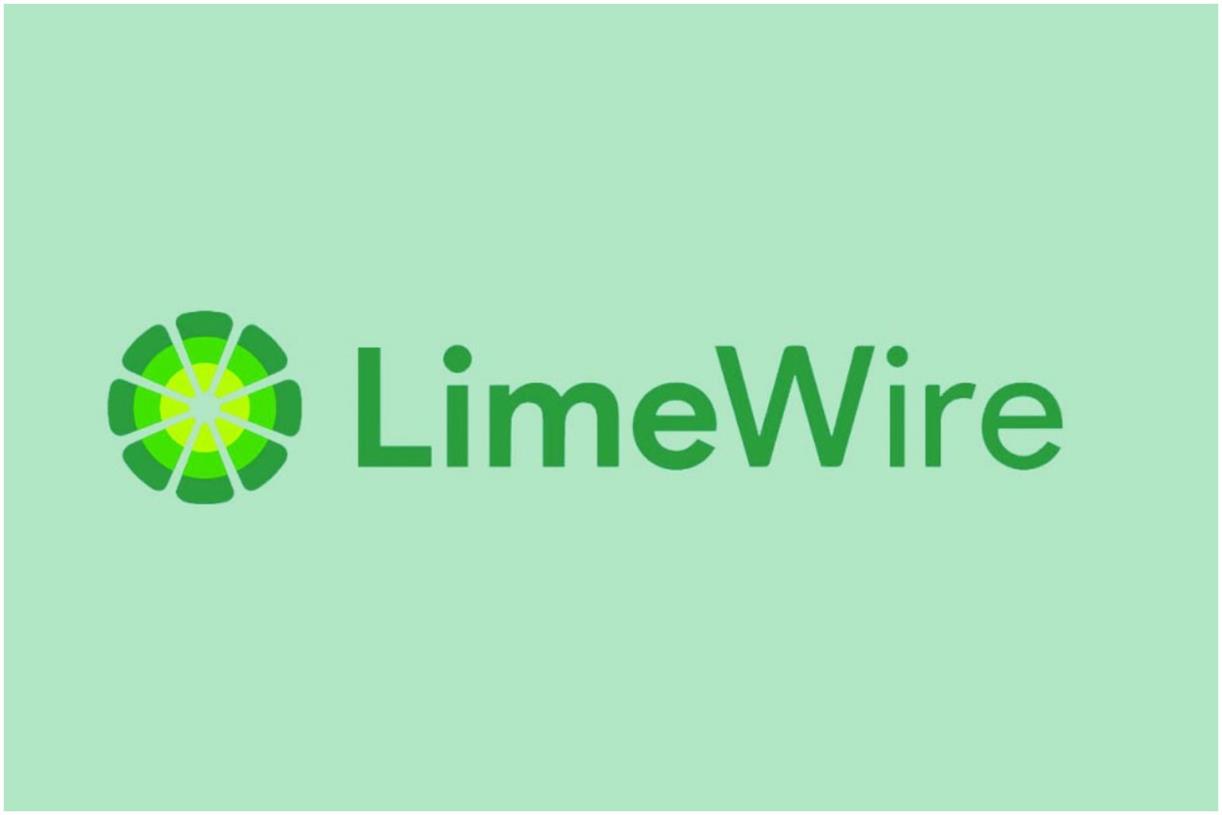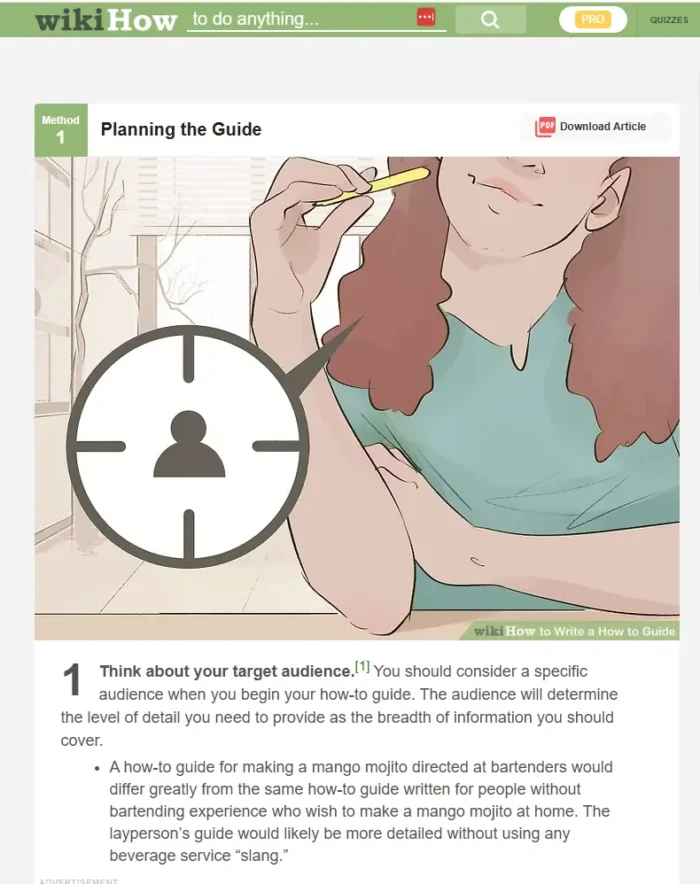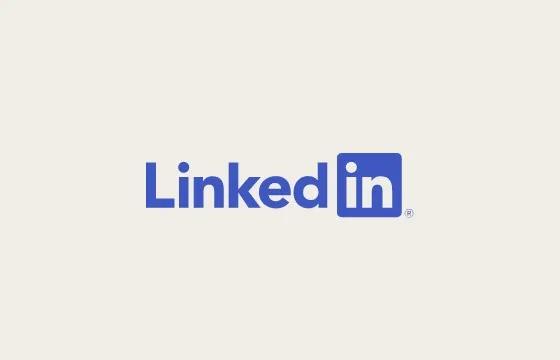70 AI Prompt Examples for Marketers to Use in 2024
Garbage in, garbage out. While that’s certainly true of coding, that now applies to marketers who want to make the most of AI. I’ve written dozens of iterations of the same prompt, refining my query until I could strike...

Garbage in, garbage out. While that’s certainly true of coding, that now applies to marketers who want to make the most of AI. I’ve written dozens of iterations of the same prompt, refining my query until I could strike the right balance. When used right, AI saves me time on routine tasks and sparks my thinking. I can then focus on sprucing up the bot’s output or funnel my energies to the more creative, engaging parts of my job. However, the right prompts are essential to make the most of AI’s capabilities. In this article, I’ll share examples of AI prompts marketers that marketers can use to make the job easier. We’ll also share essential data on how marketers are using AI today. What we’ll cover: All AI tools share a commonality: “great prompt = great output.” A great AI prompt is specific, straightforward, filled with relevant information, and uses complete sentences. If your AI prompts deviate from the above qualities, the odds of getting unusable responses increase. Our recent State of AI survey shows that hundreds of marketers benefit from artificial intelligence solutions. We surveyed 1,350 U.S. business professionals. Marketers from our survey found that AI helped their teams automate manual tasks, save time, create personalized content, and better understand customer needs. That all relies on writing prompts that are specific and clear. We asked marketers for their most effective when writing prompts for general AI. Of respondents, 53% suggested offering relevant context or background information. That includes specifying the target audience, describing the themes to cover, and providing additional notes. Other best practices included using follow-up prompts to expand on previous outputs (43%) and providing specific prompts (45%). Another 55% recommended experimenting with different prompts to see what works best for your specific use case. When using generative AI to write copy, the majority of marketers (51%) needed to write three prompts in order to achieve the desired result. When writing messages, 63% of respondents said they only needed to make minor edits to the text. So, the prompts you use make all the difference. To learn more about how marketers leverage AI, download the State of AI report. Marketers use AI for more than one purpose. They can use it to brainstorm entire processes or series if done correctly. So, as you find inspiration for your AI prompts, try them out in HubSpot’s Content Assistant. This content assistant tool natively integrates with the HubSpot products you know and love, allowing you to toggle between manual and AI content creation to generate copy for blogs, emails, and more. Now, let’s explore the different prompts you can use for your marketing strategy. These prompts are useful for writing drafts of top-of-the-funnel content about popular topics. Here are some examples: 1. What is [topic]? Write a blog post of [number] words introducing the reader to [topic]. 2. Briefly explain the stages of the [topic]. 3. List the key elements of effective [topic]. 4. What is the difference between [topic 1] and [topic 2]? 5. Outline how [topic] trends have influenced [another topic]. Informative prompts let you generate content that offers valuable insights to readers on a topic. Here are a few examples: 6. Create content for our help page that explains how [popular software feature] works. 7. Explain what [your company] can learn from [competitor] optimization of its user experience. 8. What are some popular myths about [topic]? Write a strong essay under 1,000 words that dispels all myths. These prompts help you outline ideas and create drafts for a list blog post or social media post. See some examples below. 9. List [number] must-have tools for beginner [topic] enthusiasts. 10. List [number] blog post titles on the benefit of an effective [topic]. 11. List the major themes in our recent customer review below: [review]. 12. List [number] common misconceptions about [topic] and debunk them. 13. List [number] frequently asked customer questions about our [topic]. Provide answers under 100 words to each question. AI tools help write drafts of technical materials. Below are some technical AI prompts. 14. Write a [user manual] for [product feature] that guides users through its use. 15. Attached is the raw data of a survey we conducted. Our company’s name is [name]. We surveyed [user groups]. Analyze the survey data and outline the key findings. 16. Create a business proposal for a new content management system in a hypothetical company. Address costs, timelines, and expected benefits. Creating great art with AI is both a science and an art. Before creating an art prompt, you need to set up an account with tools like Midjourney. Here’s how an AI expert, Ruben Hassid, recommends you do this: 1. Open Midjourney and Discord accounts. 2. Use Midjourney. 3. Upscale the image or create variations. U = Upscale = Make an image bigger. V = Variation = 4 new images based on that one. U1 = Upscale the top left image. U2 = Upscale the top right image. U3 = Upscale the bottom left image. U4 = Upscale the bottom right image. V1 = Create 4 variations from the top left image. V2 = Create 4 variations from the top right image. V3 = Create 4 variations from the bottom left image. V4 = Create 4 variations from the bottom right image. 17. An image for a [content type] showing a researcher engrossed in their work. 18. An image of a bold [color] lady for a web page. Lady should wear a jacket, look forward, smile, have dark hair, fold her hands, and stand in a library setting. 19. An image of nine professionals in a Zoom call setting. Blur the images a bit. Place the image of a [color] man in front of the image. The man should have a bold, bright smile and should be in a suit. 20. Image of cartoon researching with their computer. A ghost caricature behind the cartoon shows the researcher is a ghostwriter. Lead generation is attracting prospects to your business and increasing their interest in becoming customers. AI can empower marketers to attract more potential customers based on buyer persona characteristics if specified in the AI prompt. The following examples showcase how to get those customized results. 21. Generate ideas for a new product launch in [month] that incorporate the theme of [season] and [tone]. 22. Brainstorm content ideas for a blog post about [topic] in [number] of words or fewer that is search engine optimized in formatting using H2s and H3s accordingly. 23. Suggest high-volume keyword clusters for [topic] to optimize search engine rankings. 24. Identify popular trends in the industry of [product or service] that an audience of [target audience] will be interested in this [upcoming season]. 25. Generate ideas for an upcoming marketing campaign about [new product] with a marketing mix comprising [product] [price] [place] [promotion channels]. 26. Suggest [number] ways to improve website traffic during [holiday season]. 27. Identify potential target audiences in [location] that would be interested in buying [product] to solve [pain point]. 28. Suggest new strategies for lead generation in [market] and [industry]. 29. Generate ideas for creating a viral social media campaign using recent [social media platform] trending audios or popular memes from [month] [year]. 30. Identify new channels for advertising [product] aside from [current platforms already in use]. Did you know that AI can recognize different social media platforms? Marketers benefit from using AI prompts for their preferred channels instead of basing strategy on generalizations. Here are some excellent examples to follow for social media drafts. 31. Write a tweet promoting a new product suited for a target audience in [industry] and [location]. 32. Generate a post for Instagram featuring a customer testimonial about [product] in under [number] words. 33. Write a Facebook post introducing a new product feature and rephrase its current description to sound more exciting and effective: [insert current product description text]. 34. Create a LinkedIn post promoting a new job opening in [number] words or less with a strong call-to-action at the end. 35. Draft a Pinterest post featuring a new product line and provide tips on improving product photography for [type of aesthetic]. 36. Write a YouTube video description for a new product review that links to [insert links] for viewers to go to the product landing page for more information. 37. Draft a TikTok video script showcasing a product demonstration for 2 minutes at maximum. 38. Create a Snapchat story promoting a limited-time offer and describe the type of stickers or filters that can improve it. 39. Write a blog post title to promote a new social media campaign in [number] characters or less. 40. Draft an email subject line to promote a new blog post that feels personal, enticing, and not spammy. Developing ideas for podcasts or videos on your own can be exhausting. Thankfully, AI can provide ideas for them and even walk you through the script and development process if you specify it in your prompt. See the different prompts that can help you create multimedia content. 41. Draft a podcast episode about the latest [industry] trends and innovations that contains [number] minutes of dialogue. 42. Produce [number] of topics for a video series featuring interviews with thought leaders in [industry]. 43. Develop a podcast episode discussing the benefits of [products or services] divided into four chapters. 44. Create a video series that showcases customer success stories. 45. Produce a podcast episode on the history and evolution of [brand or industry]. 46. Develop a video series on best practices for using [products or services] in [number] of different ways. 47. Create a podcast episode that features an expert roundtable discussion on [industry topics]. 48. Produce ideas for a video series featuring a behind-the-scenes look at your company’s operations. 49. Develop a podcast episode that offers tips and advice on succeeding in [industry] as an entrepreneur. 50. Create a video series highlighting the impact of [products or services] on the lives of customers or clients in [demographic]. Marketers looking for more effective ways to promote their products or services can use AI for best practices. Explore the different channels, tips, and methods this technology can yield using solid AI prompts. 51. Suggest the best time and day of the week to publish a blog post about [topic]. 52. Write a press release announcing a new product launch geared toward [target audience] that sounds confident, exciting, and interesting. 53. Generate ideas for outreach emails to promote a new product, including [number] of attention-grabbing subject lines and [number] of clear calls-to-action. 54. Write a guest post for a popular industry blog discussing the impact of [product] on [marketing strategy]. 55. Suggest the [number] best hashtags for a social media campaign on [social media platform] to reach [target audience]. 56. Draft a script for a 60-second podcast ad [for service/product] that has a friendly tone and witty humor fit for [target audience characteristics]. 57. Create a landing page for a new product promotion divided into [number] sections about different benefits based on this description: [insert new product description]. 58. Write a script for a TV commercial involving [number] actors in [setting] that promotes [product/service]. 59. Draft a product description for an ecommerce site that is [number] sentences long and enticing to [target audience]. 60. Generate ideas for cross-promotion with other businesses in the [market], specifically with brands such as [brand names]. AI can allow marketers to reuse and refresh outdated content to make something new or more useful in the current year — a process we call historical optimization. When making AI prompts for content repurposing, be creative and see how you can transform your old work into something new. 61. Repurpose a blog post into a video script using this article: [insert old blog post]. 62. Turn a webinar into a podcast episode using this pre-existing transcript: [insert old webinar transcript]. 63. Repurpose an ebook into a series of [number] blog posts using this pre-existing text: [insert old ebook content]. 64. Generate ideas for updating an outdated infographic on [topic] for [year]. 65. Rewrite a blog post into a series of [number] social media post series for [social media platform]. 66. Turn an old product page into a landing page for a new product using this pre-existing copy: [insert old product page content]. 67. Generate ideas for repurposing a white paper into a video series about [topic] using this pre-existing text: [insert old whitepaper content]. 68. Rewrite an old email campaign into a new one with updated messaging suited for [season] [year]. 69. Turn a research report into a series of social media posts using this information: [facts from the research report]. 70. Generate ideas for repurposing an old product demo into a webinar. AI is becoming incredibly useful for marketers in more ways than one. When you leverage this technology, make sure you’re using specific and concise prompts to yield the results your team seeks. Experiment with different AI tools and AI prompts to find the best results for your needs.
How do AI prompts work?
AI Prompts in Marketing Today
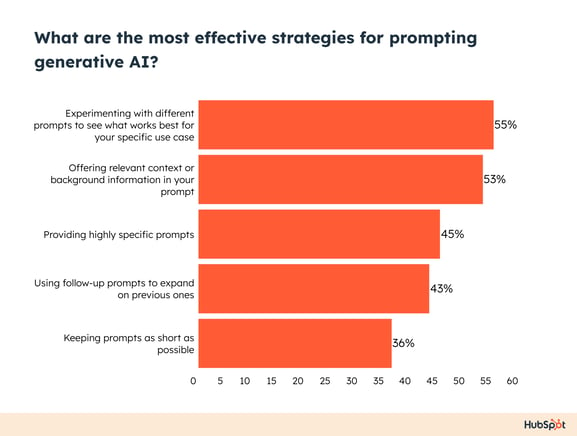
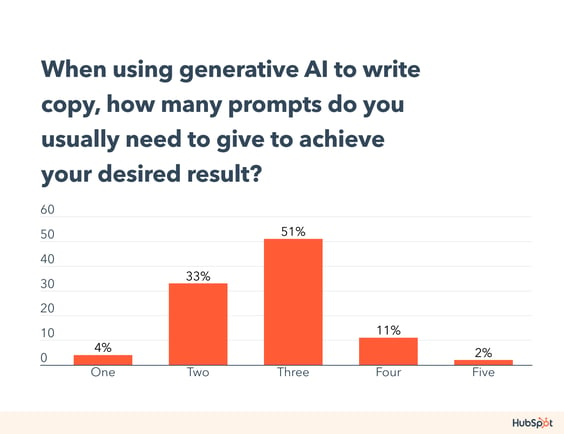
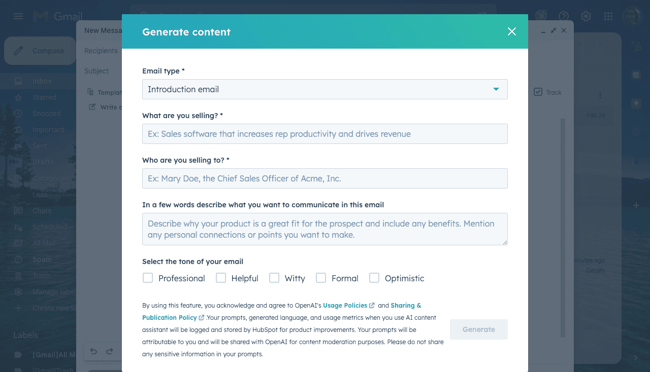 Join the waitlist for HubSpot’s Content Assistant today
Join the waitlist for HubSpot’s Content Assistant todayMarketing AI Prompt Examples
Examples of AI Prompts for Marketers
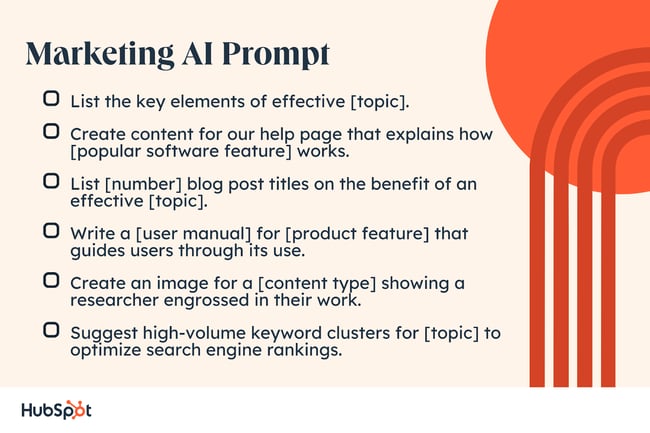
Educational Prompts
Informative Prompts
Listicle Prompts
Technical Prompts
Art AI Prompts
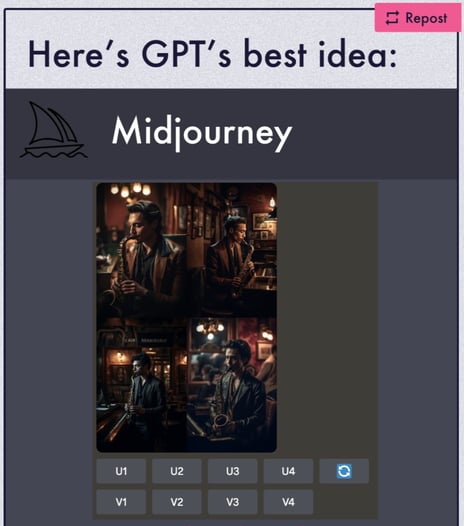
Examples of AI art prompts
Examples of AI Prompts for Lead Generation
Examples of AI Prompts for Social Media Posts
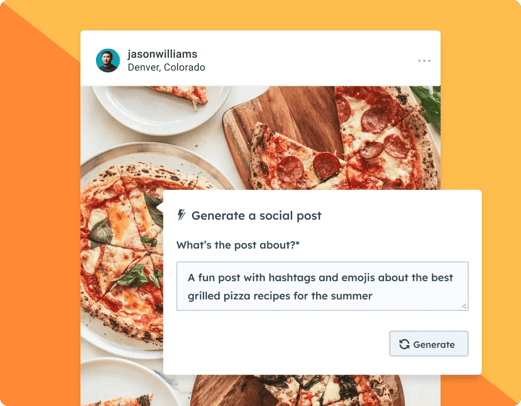
Examples of AI Prompts for Podcast or Video Content
Examples of AI Prompts for Content Promotion
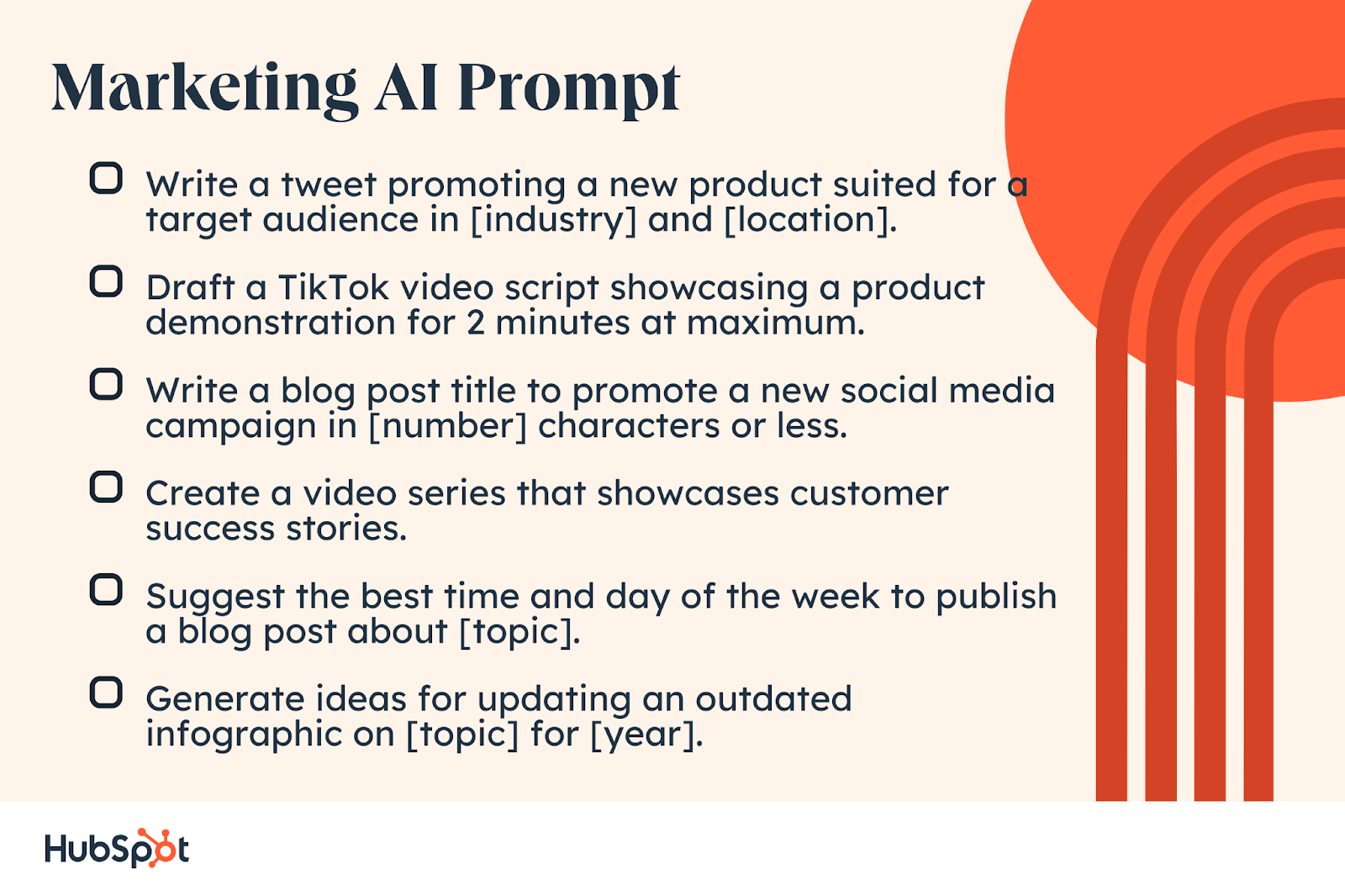
Examples of AI Prompts for Repurposing Content
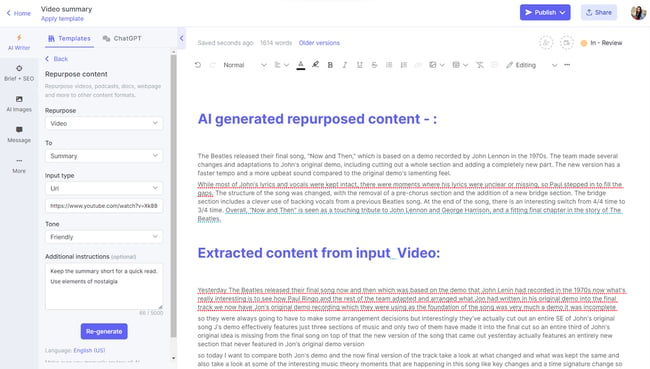
Use Thorough AI Prompts for Thorough Results

 KickT
KickT ![5 Essential Resources for Using ChatGPT at Work [Free Kit]](https://no-cache.hubspot.com/cta/default/53/540f7c99-d8e9-4c6a-9a5e-7171f8876ae9.png)










